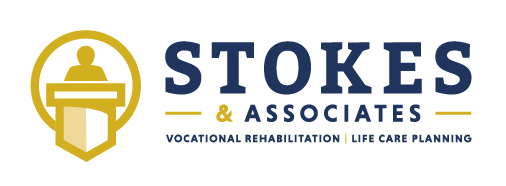Life Care Planning for Post-Traumatic Epilepsy
One common sequela of traumatic brain injury is the development of post-traumatic seizures or epilepsy. Post-traumatic seizures can result from secondary effects of head trauma, including cerebral edema, intracranial hemorrhage, cerebral contusion or laceration, alterations in the blood-brain barrier, or other neurochemical changes. The diagnosis and treatment of post-traumatic seizures represent specific challenges for life care planners to document reasonable future medical care.
In planning seizure treatment, the first challenge is confirming that the episodes experienced are actual seizures. The most common diagnostic test is an electroencephalogram (EEG). An EEG records brain activity during the time the test is taken. EEGs present a "snapshot" of brain functioning or epileptiform brain activity. The gold standard for diagnosing seizure disorder or epilepsy is to capture seizure activity on EEG that correlates to seizure-like behaviors. Infrequently occurring seizures may be challenging to capture on an EEG. When a precise diagnosis is elusive, physicians may order extended EEGs that last up to several days and videotape the patient to correlate brain activity with behavioral changes. Patients may have to be hospitalized to be observed as an inpatient in certain instances, especially if their medications are discontinued to increase the likelihood of catching seizure activity on EEG. Some nonepileptic events mimic seizures, including narcolepsy, Tourette's syndrome, convulsive syncope (body jerks after fainting), and pseudo seizures. Attention Deficit Disorder can also produce behavior mistaken for a seizure.
Once seizures are confirmed, the most common treatment is medication management, usually handled by a neurologist. Most neurologists work to titrate antiepileptic medications to a therapeutic level that reduces the occurrence of seizures while managing side effects. Classic side effects from anti-seizure medications can include dizziness, drowsiness, fatigue, aggression, irritability, depression, and loss of appetite. Occasionally, adjuvant medications such as antidepressants must be used to treat the seizure medication side effects. It is important for life care planning to include sufficient physician follow-up visits and laboratory testing to monitor medication levels and allow for trial and error with medications. Once seizures are controlled, patients can often have a good quality of life. However, seizure precautions may continue to be necessary, with activities such as driving, swimming, working around dangerous equipment, and working at heights.
About 30-40% of people who have epilepsy will develop what is known as intractable or refractory epilepsy, in which medications are not effective. The most common treatment for intractable epilepsy is a Vagal Nerve Stimulator (VNS) device. The Vagus nerve is responsible for regulating internal organ functions such as digestion, heart rate, respiratory rate, and certain reflexes like coughing, sneezing, and vomiting. A VNS is an implantable device designed to send electrical stimulation to the Vagus nerve as it travels to the brain. An incision is usually made near the left collarbone, and a thin device the size of a silver dollar is implanted. Electrical leads are run to the Vagus nerve, and the entire device and leads are sewn up under the skin. Periodic device replacement is necessary as the battery life diminishes and the technology is routinely upgraded. The life care planner should consider the costs associated with the implant and replacement of the stimulator (i.e., physician, facility, and technology fees) and include such in the life care plan.
Depending on the age of onset, treatment for trauma-induced seizures can be extensive and costly. Therefore, life care planners should consult with treating neurologists to discuss the ongoing needs of the evaluee and accurately fund for future care.
